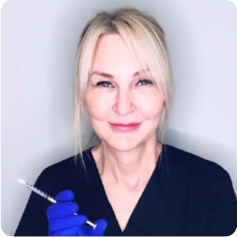References
A qualitative study exploring the application of psychosocial screening to identify psychological conditions in non-surgical aesthetic patients

Abstract
This study explores medical aesthetic practitioners' initial and ongoing application of psychosocial screening, to identify existing or emerging psychological disorders or conditions in non-surgical aesthetic patients. The increased demand for non-surgical aesthetic treatments correlates with the rise of patients who present with existing or evolving psychosocial problems or issues. Therefore, patients must be appropriately and adequately assessed, to identify those vulnerable individuals who are not suitable for treatment or whose treatments may exacerbate underlying psychological conditions. Identification can support signposting to trained professionals to ensure appropriate holistic care. Moreover, the study explores which validated screening tools have been adopted into practice, and routes for guiding patients should concerns arise.

There is no doubt that non-surgical aesthetic procedures have gained popularity within the past two decades, with the American Society of Plastic Surgery stating that the use of botulinum toxin injections has risen by a staggering 845% from 2000–2018 (Balasubramanian, 2020). Further evidence indicates that individuals have an increased interest in pursuing aesthetic procedures within the next 12 months. A recent study highlighted the fact that 44% of people in the UK believe that the 2020 COVID-19 lockdowns have aged them physically and emotionally, as opposed to any other event (Pauly, 2020). Additionally, six million people in the UK are reported to be considering invasive or non-invasive treatments to treat the perceived ageing effects of lockdown (Walden, 2021). As a result, non-surgical aesthetics practitioners can expect a significant increase in demand for treatments.
The medical aesthetics speciality has seen increased demand due to society's ever-changing expectations and values and the perpetual drive for a youthful appearance, illustrating that sociocultural factors influence a person's body image. Individuals are living longer, yet ageing at the same rate. Many strive to hold onto a youthful appearance. People will seek the services of an aesthetic practitioner to enhance their looks and delay the ageing process. Some individuals who seek toxin treatments are body-conscious and aware of the ageing process's impact on their perceived attractiveness, social status and social acceptance. This also highlights their fear of being judged by others (Molina et al, 2015).
Register now to continue reading
Thank you for visiting Journal of Aesthetic Nurses and reading some of our peer-reviewed resources for aesthetic nurses. To read more, please register today. You’ll enjoy the following great benefits:
What's included
-
Limited access to clinical or professional articles
-
New content and clinical newsletter updates each month


